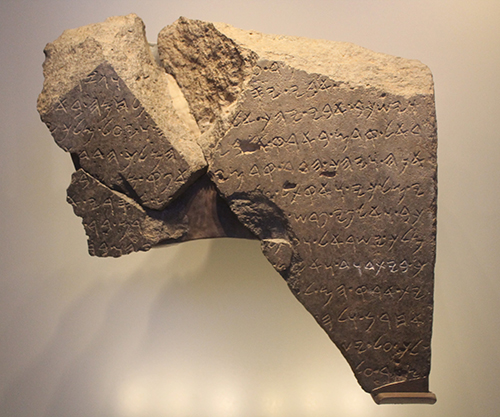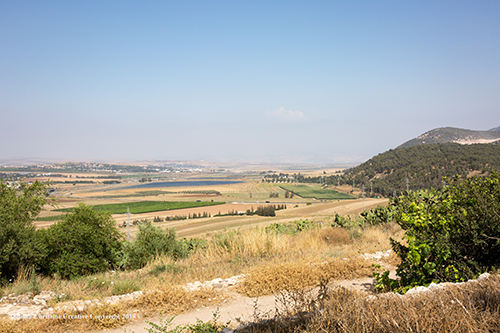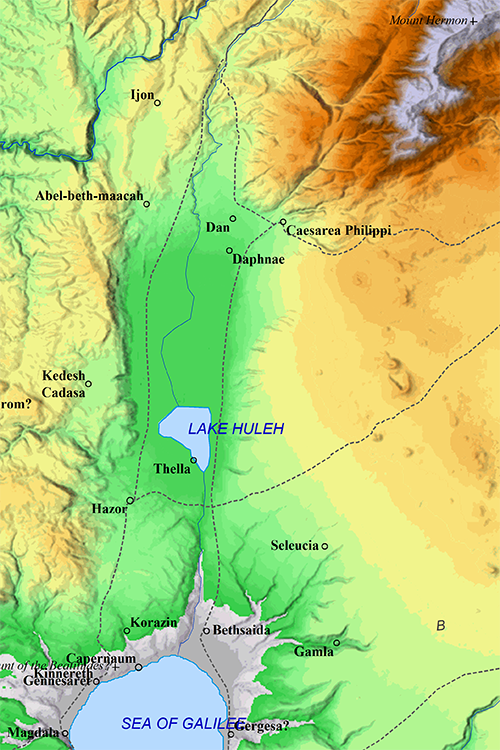

by Luke Chandler
Synopsis: Examining "the Tel Dan inscription," famous for being the first extra-biblical mention of David, Luke concludes that this stone plaque seems to be a Syrian version of Jehu's revolt.
The Tel Dan inscription is the first confirmed mention of the "House of David" (David's Dynasty) outside of the Bible, but what does the full text actually say? Does it illuminate biblical people or events?
This Aramaic inscription is on a stone plaque likely set up by the Syrian king Hazael in the 9th century BC when he captured the city of Dan, possibly during the campaign of 2 Kings 10:32. When Israel retook Dan, the stone was broken and discarded. The surviving fragments were unearthed by archaeologists in 1993 and 1994 and are displayed in the Israel Museum.
William M. Schniedewind offers this widely accepted translation of the text. Reconstructed and damaged portions are in brackets.
1. [ ]...[ ] and cut [ ]
2. [ ] my father went up [ ] he fought at [...]
3. And my father lay down; he went to his [fathers]. Now the king of I[s]/rael had penetrated
4. into my father's land before. [But then] Hadad made me king,
5. And Hadad marched before me. So I went forth from [the] seven[...]/s
6. of my rule, and I killed [seve]nty kin[gs] who had harnessed thou[sands of cha]/riots
7. and thousands of cavalry. [And I killed...]ram son of [...]
8. the king of Israel, and I killed [...]yahu son of [... the ki]ng of
9. the House of David. And I made [their towns into ruins and turned]
10. their land into [a desolation...]
11. others and [...Then... became ki]/ng
12. over Is[rael...And I laid]
13. siege against [...]
Evidence suggests that this inscription may describe people and events in 2 Kings 8 to 10. The name "Hadad" in lines 4 and 5 appears to be the Syrian king Ben-hadad who was replaced by Hazael in 2 Kings 8:7-15. The king of Israel named in lines 7 and 8 ("…ram") and the king from the House of David (Judah) in lines 8 and 9 ("…yahu") match up with "[Jo]ram" of Israel and "[Ahazi]yahu" (Ahaziah) of Judah. If correct, Hazael's original text of lines 7 to 9 boasted, "[I killed Jo]ram, son of A[hab], king of Israel, and [I] killed [Ahazi]yahu, son of [Joram, kin]g of the House of David."
Seeing these names is nice, but it also creates problems, though with reasonable solutions. For one, the Bible says Hazael killed Ben-hadad and took the throne, yet Hazael claims in line 4 of this text that Ben-hadad "made me king." That seems to contradict until we realize this is typical ancient propaganda. Rulers often lied or exaggerated facts to create the appearance of legitimacy, much like they still do today.
Hazael also claimed to have killed "seventy kings" in line 6. This recalls Jehu's order to slaughter seventy "sons" of Ahab's house (2 Kings 10:1-8). Relationship terms were often used broadly in ancient times, even in the Bible. (Jesus was the "son" of David; we are "children" of Abraham.) In this light, seventy "kings" in the Tel Dan text could denote nobles or extended royal family. Even so, this raises the question of why Hazael would claim Jehu's work for himself.
With the seventy kings, Hazael also takes credit for killing Joram and Ahaziah, though the Bible says Jehu killed them (2 King 9:17-27). The way to understand this is probably through the conspiracy God revealed to Elijah in 1 Kings 9:15-17 to anoint Hazael and Jehu as new rulers. Elisha later anointed Hazael and sent a prophet to anoint Jehu. Is it possible Hazael and Jehu, moved by the same prophets of God, came to a temporary understanding or alliance?
A temporary alliance would explain how Jehu safely left his army in the field while overthrowing Joram during a war with Syria (2 Kings 9:14-16). It would also explain why Hazael took credit for Jehu's work. Rulers tend to take credit for anything they can, even if not personally involved. If Hazael was linked to Jehu through the divine conspiracy in 1 Kings 19, it is not surprising he would claim Jehu's success as his own.
Together, the Tel Dan inscription and the Bible illuminate each other and give insights into the people whose actions still teach us today.
Author Bio: Luke has worked with the North Terrace Church of Christ in the Tampa, Florida area for 12 years and has worked with archaeological expeditions in Israel for 9 years. He and his wife, Melanie, have five children. His website is lukechandler.wordpress.com. He can be reached at lukechandler@verizon.net.

Image 1: The Tel Dan Inscription

Image 2: The general area where Jehu killed Joram and Ahaziah. Photo by “Emma Christine Creative”.

Image 3: Map Created in BibleMapper 5.0, © 2005-2015 by David P. Barrett.